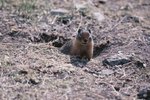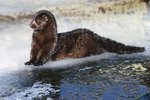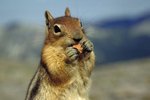
Pine martens are small tree-climbing mammals belonging to the weasel family. Eight species of pine marten exist worldwide, including the American pine marten and the beech marten, which is native to Europe and Asia. Their small triangular heads and large ears give these agile little creatures an appealing appearance.
Physical Characteristics
These small mammals have silky fur ranging from pale yellow to dark brown in color and a breast spot that can vary in color. Their bushy tails comprise around a third of their overall length, which averages between 30 to 34 inches. Adult pine martens weigh around 2 pounds.
Reproductive Facts
Pine martens become sexually mature when they are between 2 and 3 years old and are pregnant for nine months. Their babies, known as kits, are usually born under bushes or in a hollow log. Pine martens give birth to their annual litter of between two to four babies in the early spring. Born blind, the kits open their eyes when they are around 6 weeks old.
Habitat
Pine martens live in woodlands and leafy and conifer forests. They are accomplished climbers and in winter they burrow into tree roots to fend off the cold. Males have a territorial range of between one and three square miles, while females occupy up to one square mile.
Diet
Pine martens are omnivorous, living on a combination of fruit, nuts, berries and meat from their prey, which includes squirrels, chipmunks, reptiles, mice, fish and insects. Bobcats and some species of hawks and owls are their natural predators.
American Pine Marten
The American pine marten, Martes americana, is found in woodlands and forests in Alaska, Canada, the Pacific Northwest, northern New England, the Sierra Nevada in California and parts of the Midwest.
Conservation Issues
The American pine marten has disappeared from some parts of the northeastern United States because deforestation has deprived it of some of its natural habitats, and pine martens are still hunted for their fur. Although not protected under the Endangered Species Act, pine martens are considered a sensitive species by the United Sates Forest Service and some states have introduced conservation initiatives to protect the pine marten’s habitat and reintroduce the mammal into regions where it had become extinct. Globally, populations of the pine marten are not threatened, although it has become locally extinct in some regions.
Worldwide Conservation Status
The pine marten is listed as a protected species under the Bern Convention on the conservation of European wildlife and natural habitats. In the United Kingdom it is protected under the Wildlife and Countryside Act and cannot be disturbed, trapped or sold without a license.
References
- The Nature Conservatory: American Pine Marten
- Minnesota Department Of Natural Resources: American or Pine Marten
- The IUCN Red List Of Threatened Species: Martes Americana
- Trees For Life: Pine Marten
- Department Of Natural Resources Wisconsin: Pine Marten
- Friends Of The Clearwater: Pine Marten
- Council Of Europe: Convention On The Conservation Of European Wildlife And Natural Habitats
Photo Credits
-
Tom Brakefield/Stockbyte/Getty Images
Writer Bio
Based in Belfast, Northern Ireland, Elizabeth Burns began writing professionally in 1988. She has worked as a feature writer for various Irish newspapers, including the "Irish News," "Belfast News Letter" and "Sunday Life." Burns has a Bachelor of Arts in English literature from the University of Ulster as well as a Master of Research in arts.



